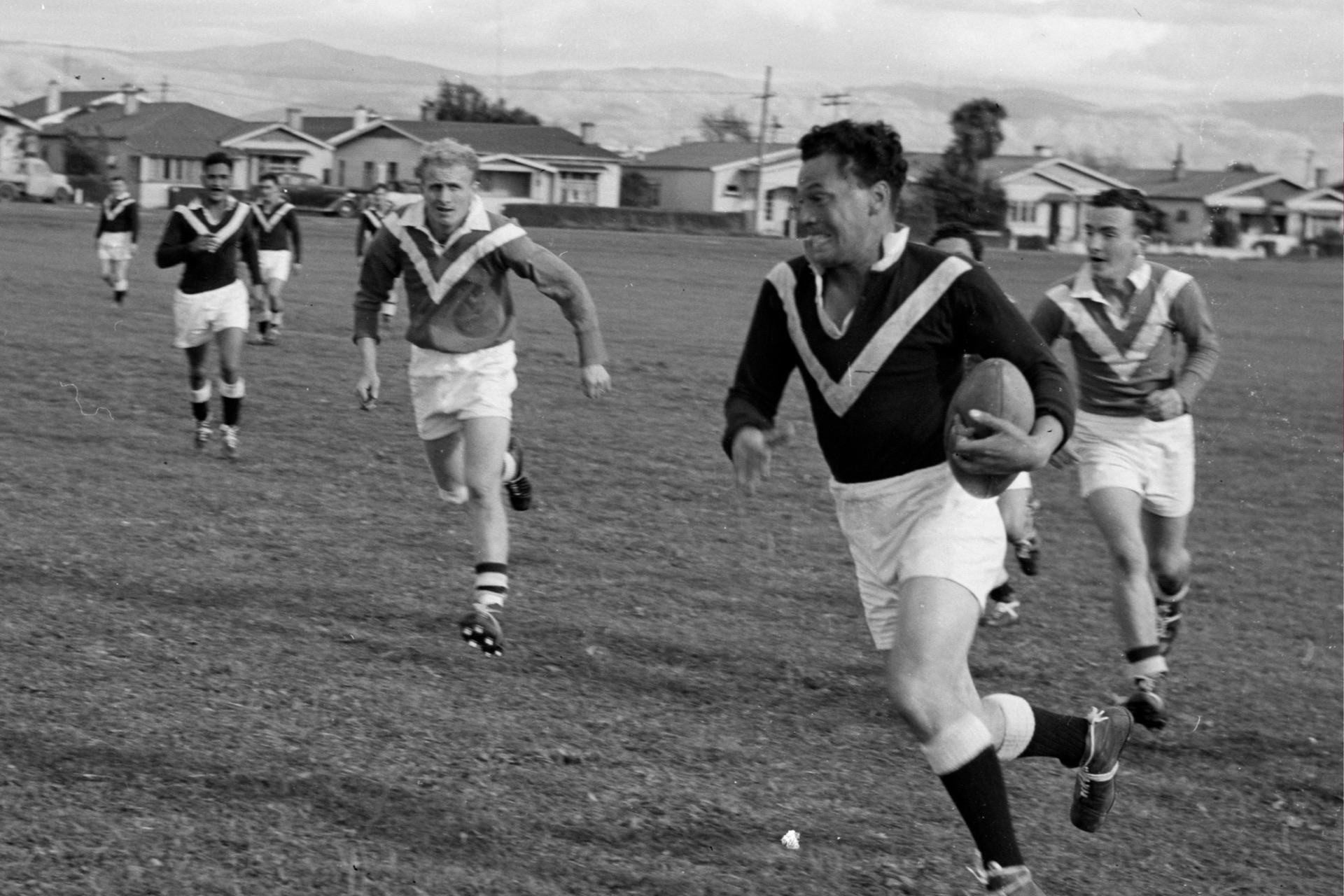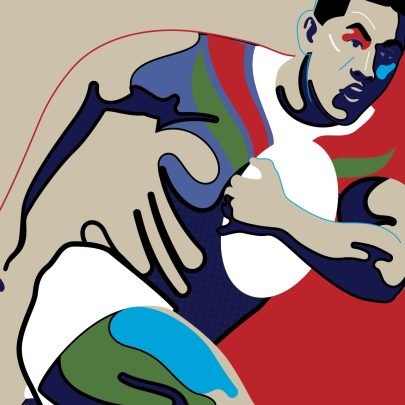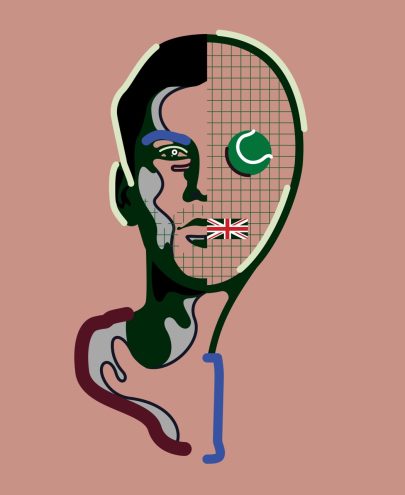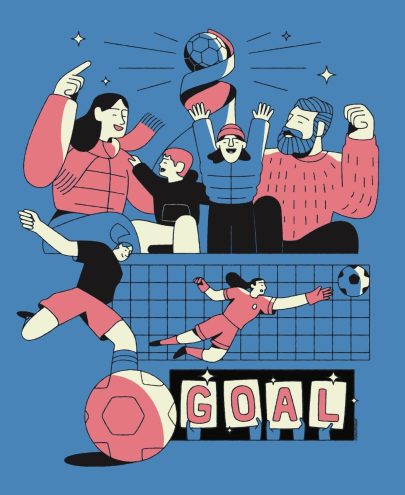Apr 30, 2024 Sport
A buoyant, heaving sea of red and blue may be, on some occasions, unsettling. The red and blue of the Union Jack was eaten alive for the coronation of England’s monarch in May. Bunting, cakes, tablecloths, general tableware paraphernalia, window frosting, plastic hats, bowties, suspenders, masks, all manner of sequins, glitter and lycra, with cakes and pastries and biscuits and themed cocktails and the necessity, the absolute necessity, of Pimm’s. The commonwealth was to gorge itself in celebration. It was a fête by coercion, an effort to rail against the decline of empire. Every sector, it felt, was on strike. Football was not coming home. The cost of everything had hiked. Tories were in turmoil, prime ministers resigned and lettuce wilted. England’s reality was one of loss, not celebration; a fate that was looming long before the death of its previous monarch. But England’s real loss, as I see it, started on 12 November 2022, with Stephen Crichton its author.
The night before, at Elland Road stadium in Leeds, the first of two semi-finals for the Rugby League World Cup (RLWC) was decided, as the Kangaroos crept home to beat the Kiwis 16–14. In York, the Kiwi Ferns had just conceded a narrow 10–8 semi-final loss to the Jillaroos. Home in Aotearoa, England lost to New Zealand 34–31 in the women’s Rugby World Cup. I received the news of this game with a pleased sense of justice, listening to it via an amateur YouTube commentator and his mum while on a train from Leeds to London. The second semi-final of the RLWC — at Emirates Stadium in London, Toa Samoa versus England — was almost my last. My mistake on that day was a failure of communication; my single seat an island surrounded by English fans.
The game itself had the kind of undulating intensity and, at times, hostility that made you wish you were watching at home. But Toa Samoa ensured it was worth my being there. Stephen Crichton scored off an intercepted pass from Victor Radley in the 72nd minute to put Toa in front. Another try minutes later from Herbie Farnworth levelled the score, but no one will remember that. Everyone remembers that in the 83rd minute, Chanel Harris-Tavita got the ball to Crichton who won the game with a drop goal for Samoa.
Almost a year later, in October 2023, more red and blue flags engulfed Eden Park for the Pacific Championships. This was, for all intents and purposes, a home game for Toa, not their opponents the Kiwis. The wrong venue, perhaps, a very wrong score — a 50–0 disappointment — but despite it all the pulse of the crowd was with Samoa. The parades, real and Roblox, TikToks, sirens and flags that had enveloped the globe all year in the wake of Samoa’s world cup triumph in London had all the spectacle of a travelling royal court. In beating England, Toa Samoa had taken 685 — the country’s area code, embraced as a shorthand for national pride — to the world and back again as the first Tier 2 nation to qualify for a world cup final. The moment was built on, and made possible through, the historic red surge Mate Ma‘a Tonga had achieved in the 2017 world cup. But how might we tally these moments for rugby league, across the grassroots, domestic and international game, and where should the emphasis go?
The social history and whakapapa of rugby league in Aotearoa, where league is wedded to industry, has had a significant contribution from historian Ryan Bodman. In the month since the release of his first book, Rugby League in New Zealand: A People’s History, Bodman has carried the stories of the game home to some of the fortresses which produced them, in Onehunga, Ellerslie, Ngaaruawaahia and Raahui Pookeka (Huntly). The reception has been triumphant; copies of the book will be stored in those hallowed clubrooms with treasures ejusdem generis. The stories in the book, and of this game, belong to the communities who have nurtured it since 1907 despite, as Bodman describes, an interminable campaign from union to undermine its growth. Across generations, grades and grudge matches, rugby league has, in this corner of the world, outside of those hardened clubs, finally accumulated the kind of fervour previously reserved for something else. In this way, the landing of A People’s History, drawing together each successive and pivotal moment through which the game was built, is timely.
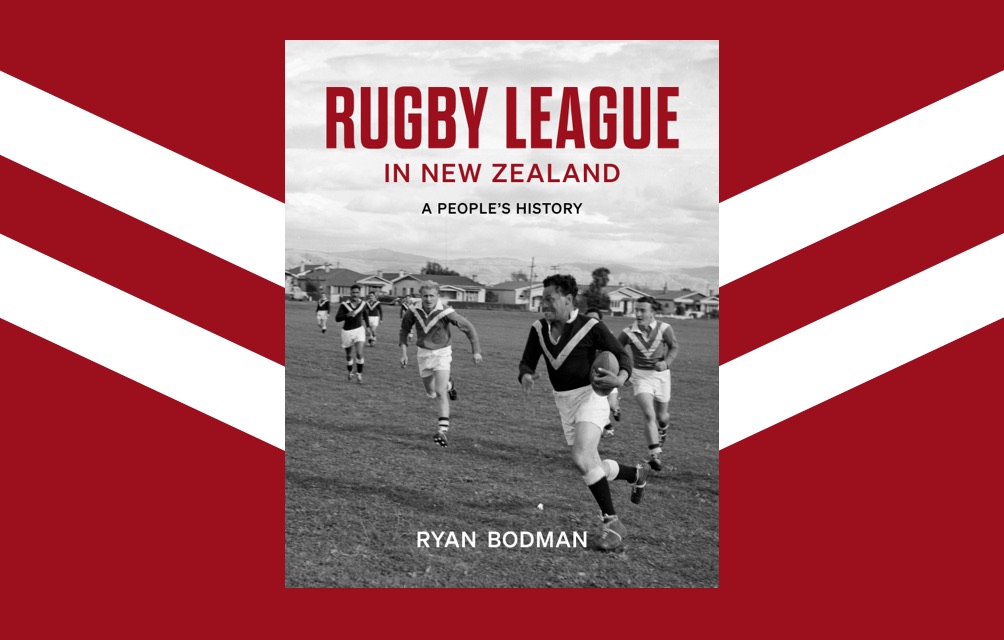
The People’s Game
In the Australasian competition, the New Zealand Warriors closing the 2023 season with a top-four finish is something that would have seemed impossible in years past, when the club often fought to stave off the wooden spoon. Last season we were second to last. My dad would tease that, once again, the Warriors had snatched defeat from the jaws of victory. In the same vein, he would tell me to keep the faith. This year was our year — almost. The flags, car decals and personalised plates, custom shirts, beanies and jerseys, old and new, bore a pride not seen since the 2011 grand final run. ‘Up the Wahs’ entered the lexicon, nationally and internationally, unseating the former ‘lets gone Warriors’. No one seemed to mind the bandwagon-jumping, even the lifetime members, because here was a club deserving of celebration and fanfare: everyone’s second team, and our first. Shaun Johnson and Tohu Harris had the Shepard Fairey ‘hope’ and ‘believe’ treatment on the front page of the New Zealand Herald, ahead of semi- and preliminary finals. And the difference at Mt Smart, comparing the final games of the 2022 and 2023 seasons, was plain: from rain and misery in a one-point loss to the Titans last year, to the sold-out masterclass over the Knights, 30 points the difference, in September. The National Rugby League (NRL) flew Newcastle’s immortal halfback, Andrew ‘Joey’ Johns, to Tāmaki, only to watch his team be buried. What the Brisbane Broncos achieved at Suncorp Stadium the following week would sting. Reece Walsh received no penalty for the most illicit forward pass, giving the Broncos a try that would entrench momentum in the home team’s favour, and putting a lid on the season too early. No Wahs fan wanted the run to end, but none were disappointed.
The Warriors’ achievements should not come as a surprise. The only real shock was Kalyn Ponga claiming the Dally M Medal ahead of Shaun Johnson. All of the accolades and choice words were there for anyone who was willing to see, and they were certainly clear to Warriors coach Andrew Webster. Aotearoa has and continues to be a wellspring for league talent. Melbourne Storm coach Craig Bellamy knows it, Dolphins coach Wayne Bennett knows it, the NRL knows it. But the professionalisation and commercial enterprise that the ‘game’ represents in the NRL, and the development pathways for young talent to progress, places pressure on the grassroots game. The impact of this tension, which presents as both opportunity and a drain on the stores of local talent, has changed the ways in which the game is played in Aotearoa. As Bodman’s work describes, these tensions culminate in personal and financial pressures for young players to secure a paying contract, alongside a discouraged sense of loyalty to one’s club, as players shop from one club to the next in the pursuit of representative footy.
For its part, the NRL is not necessarily looking to the Pacific to develop and grow the game, but will look across it to harvest talent. Rugby league in this sense, as Toeolesulusulu Damon Salesa has written, is now an industry; its clubs and players a commercial product, its business model, in the abstract, risky. And though it is justified as expanding the scope of viewership, the NRL taking the first games of the 2024 season to Las Vegas must be understood in this context. Todd Gurley, former running back and six-season gridiron veteran in the National Football League (NFL), commented that the move is akin to the NFL’s showcases across Europe. Gurley noted that although American audiences, among others, may be behind the eight ball with league and Aussie rules, Vegas will be the perfect launchpad to grow the game organically in the northern hemisphere. But the first advertisement to promote the matches — in which the Manly-Warringah Sea Eagles play the South Sydney Rabbitohs, and the Broncos take on the Sydney Roosters — has raised eyebrows about the product that the NRL hopes to sell to a North American audience. Predominantly, and this is also true of union, the NRL is distinguishing league from gridiron through an emphasis on the lack of helmets, padding and protective gear. The advertisement details a series of tackles that are not strictly within the bounds of play. In other words, the NRL is selling the game to an audience in the global North with plays that would invite a penalty, sin bin or send-off. More recently, Australian prime minister Anthony Albanese (unsurprisingly, a Rabbitohs supporter) attended a state dinner hosted by Joe Biden, on a four-day visit to discuss AUKUS and the ongoing genocide in Palestine. His plus one was Peter V’Landys, chair of the Australian Rugby League Commission.
Potential conspiracy theories aside, the priority the Australian government has placed on exporting the NRL to the United States is concerning. The saccharine response from the NRL to the reception of its product in America is alarming but, again, unsurprising. Even the most recent Pacific Championships, a two-tier competition played across five venues, in three countries, with a men’s and women’s competition, did not seem as significant to the NRL as this most recent US marketing swing. Indeed, even at the Pacific Championships’ Pacific Cup final in November, as the Kiwis delivered perhaps the most emphatic performance over the Kangaroos since their 2008 RLWC match-up — 30 points to 0 — FMG Stadium in Kirikiriroa recorded an attendance of just 13,269. Mate Ma‘a Tonga had the foresight to organise their first tour in England for October–November and though they conceded each of the three test matches played, it was the Pacific Championships that lost out. Rugby League Samoa are considering a similar tour for the end of the 2024 season, given the heightened rivalry with England forged during last year’s world cup.
In the regular season competition, Papua New Guinea are now the favourites to secure a place as the 18th team in the NRL, and are reportedly targeting South Sydney winger, Alex Johnston, as a central figure in their line-up. This would be the right choice for the NRL, given league is the national sport in PNG and the number of Papuan players the Australian teams boast. Again, though the demography of players has and continues to grow and change, additional teams in Queensland and Perth, and the possible revival of the short-lived Adelaide Rams, all seemed to have the lion’s share of consideration before any Pacific qualifiers. This conflict, between the commercial product and the local game — the soul of the code in New Zealand and across the Pacific — threatens the tapestry and heritage that the grassroots game, and its stalwart clubs, have kept alive.
That heritage comes from a concrete foundation. Rugby league grew in pockets across Aotearoa, and globally, as a working man’s game. Where industry set foot, league was sure to follow and be fostered. Whether those industries were coal mining, forestry, automobile manufacture, freezing works or meatworks, the leap to league occurred where communities shared working-class values and an entrenched sense of collectivity. Rugby league in New Zealand has never seen the kind of funding that union enjoys, and so much of what endures at the club level is down to voluntary work and, as Bodman notes, a “generosity of spirit”.
Grassroots league continues to operate in this manner. This is, of course, part of what makes the game great, what sets it apart from union, and what distinguishes it as a game that, now more than ever, anyone can pick up and play, and everyone is more than welcome to watch. The most you will pay to watch club league is five dollars, and even then ‘koros get in cheaper’. So many clubs run in tangent with marae, and the relationship between the two means that league can’t be deracinated. Manaakitanga is at the core. In the local and regional comps, a round robin system is implemented for food; each club taking turns in the kitchen. Hāngī can often be pre-ordered and delivered at halftime. Player of the day is democratically decided by a survey from spectators, who give a koha and nominate their player of choice.
But it is important to note, as Bodman records, that the evolution of the game was not benign, nor was it naturally a secondary preference to union. Rather, union sought to deliberately and chronically undermine its growth even before its introduction to these shores. The lack of funding is obvious. Less appreciated is social conditioning, in which those who opted to try their hand at league — George Nepia among their ranks — were shamed, embarrassed, blacklisted and barred for their choices. The suppression of rugby league in Aotearoa is what enabled union to become the dominant code and our national game, and its success in the face of such a campaign is nothing short of brilliant. Take the clubrooms for example. Rugby union clubs organise around a division of labour, gender and hierarchy. The women, beavering away in kitchens, were not to be engaged. The juniors were to clean up and clear out before the premiers set foot on the grounds.
League clubrooms were, by contrast, refreshing. The labour and investment of women, the engine of the clubs, was seen and heard. Seniors and juniors shared locker rooms, and the juniors were mentored accordingly. New Zealand secondary schools, particularly those hard-wired to union, refused for decades to offer the first XIII as an option, so the clubs had to work even harder in the absence of help from the education establishment. Many of these clubs were established soon after the introduction of the game in New Zealand in 1907. The Ngaaruawaahia Panthers took quickly to the game, establishing their club in 1911; Huntly South celebrates 90 years next year; and Taniwharau just passed the 79th anniversary of the club’s founding. What these clubs, and others like them, fostered and produced, the communities they have forged, the opportunities they have provided, in the face of an unrelenting push to starve league of oxygen, is quite remarkable. Having won through, these clubs now confront evolving challenges, with the professionalisation of the sport and the distorting commercial interests the NRL has come to represent.
The NRL is hardly innocent, though it’s regarded with affection on both sides of the Tasman. On the one hand, the Australian league pays handsomely, setting up some families and whānau with a more secure financial future. But on the other, as Bodman and many others note, ruthless scouts poach Kiwi talent from their junior teams, grind them through the youth development machine, and either spit them out as failures — the hundreds of youngsters who do not make a club each year — or professional athletes. That ruthlessness perhaps has more in common with hard-edged union than it does with the club spirit of league in New Zealand. The talent that feeds into the machine, either succeeding or not, is disproportionately drawn from South Auckland. That lends a racialised element to the game, which is consistent with the wider history — of both union and league — where the sports were, supposedly, an equal playing field on which Māori and Pacific players stood an equal chance.
Neither game was ever that simple: while they drew from Māori and Pacific communities to sustain amateur and professional success, what was returned to those communities was insufficient. The teams of Raahui Pookeka ran, and still run, off of the smell of an oily rag. But these are precisely the clubs from which league traces its past and draws its future. The challenge, as Bodman notes, is to make space for those clubs and communities to play and run the game as they see fit.

